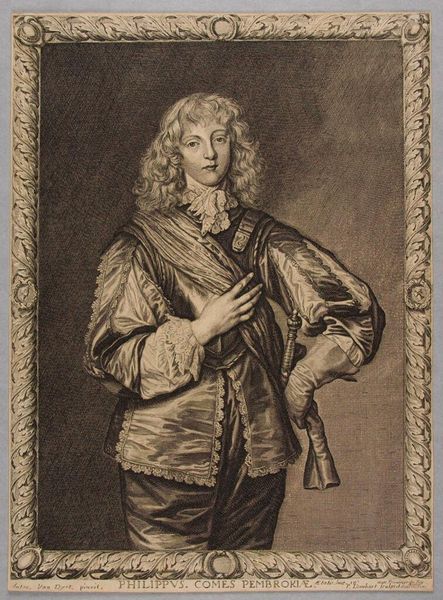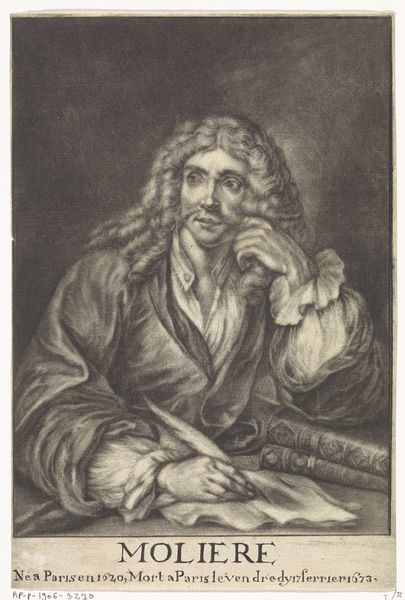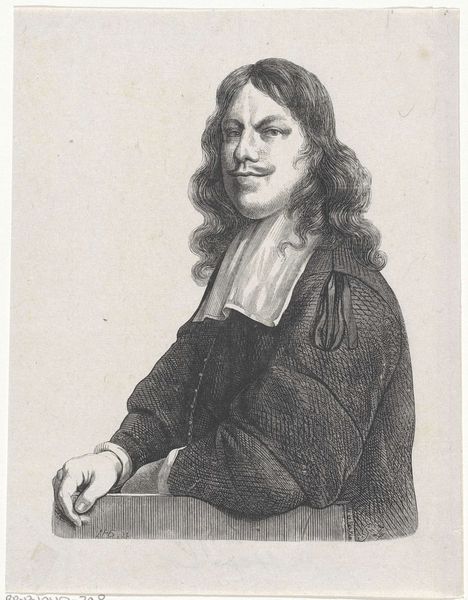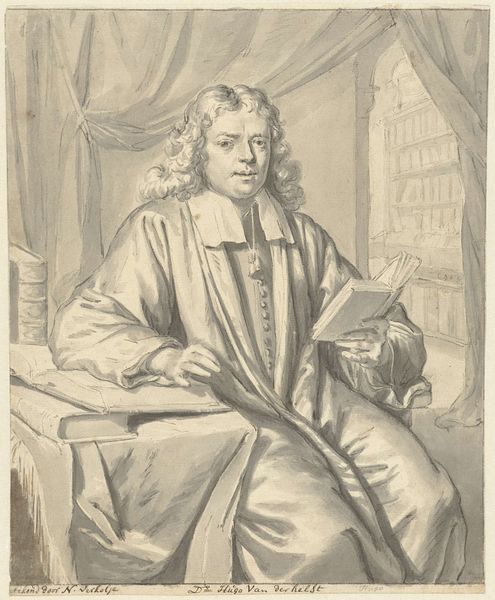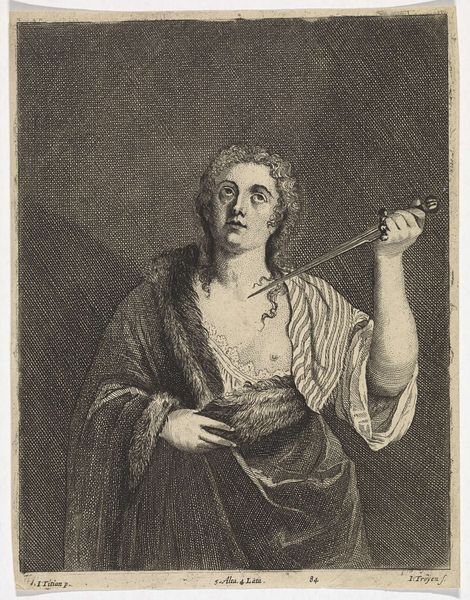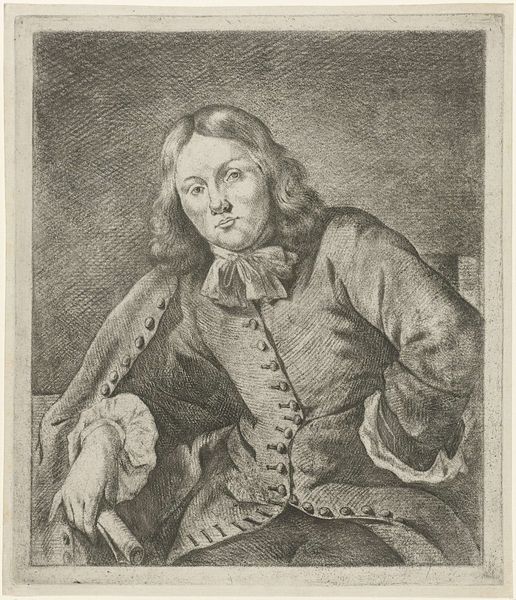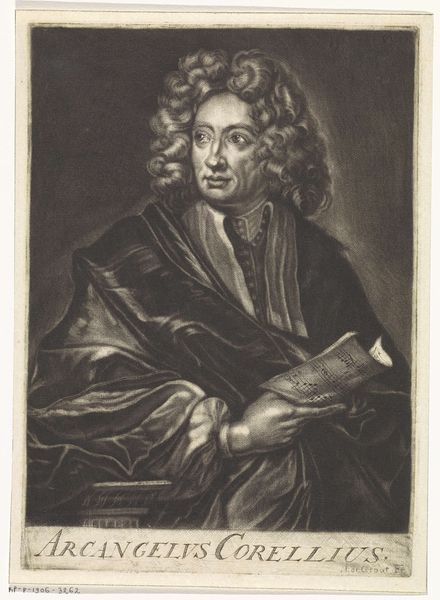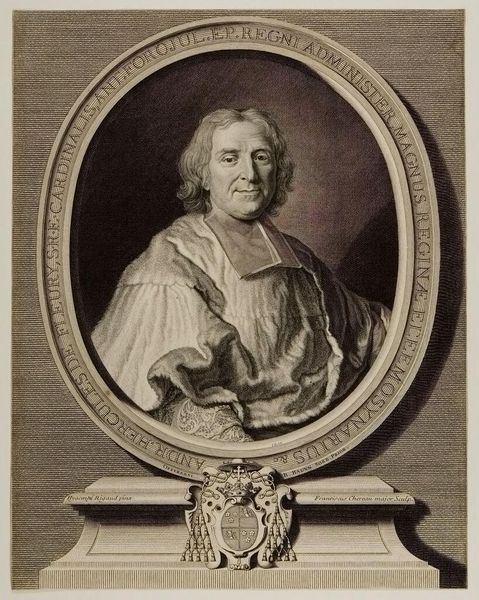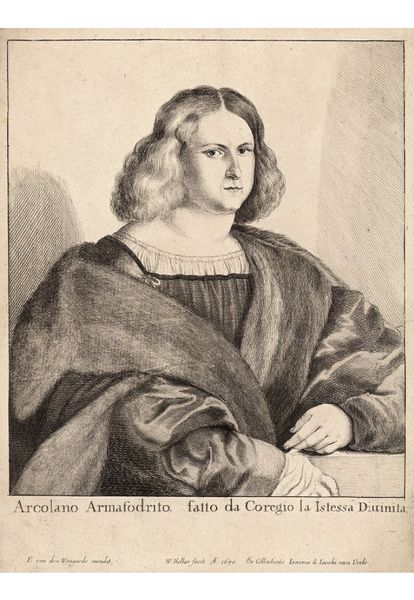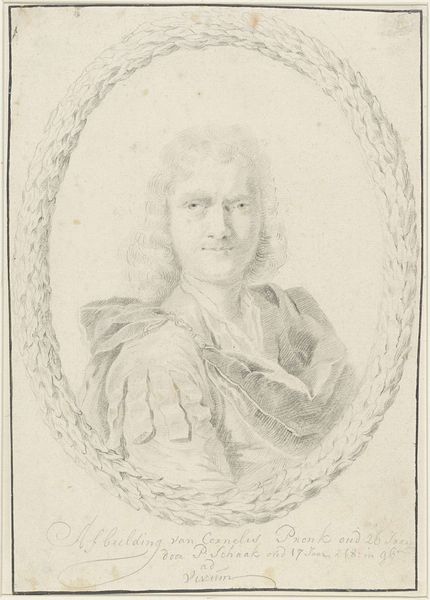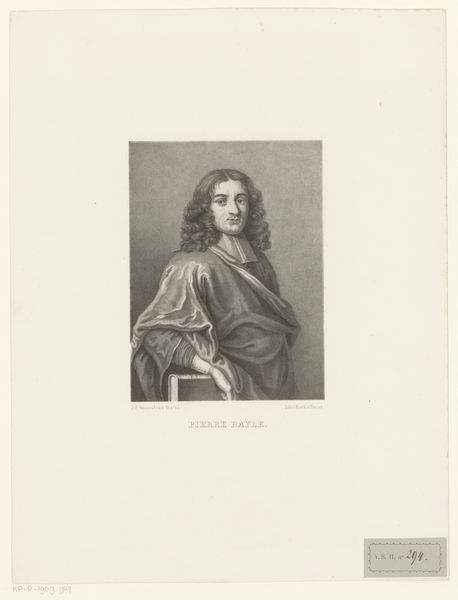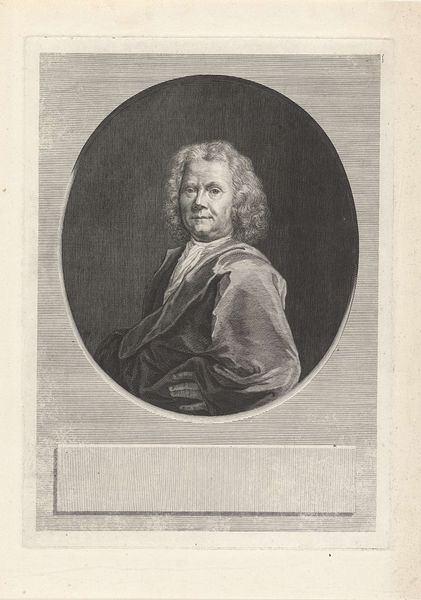
drawing, pencil
#
portrait
#
drawing
#
dutch-golden-age
#
caricature
#
pencil drawing
#
pencil
#
realism
Dimensions: height 313 mm, width 203 mm
Copyright: Rijks Museum: Open Domain
Editor: So, here we have "Portret van de schilder Nicolaes de Vree," a drawing by Johannes (I) Voorhout from 1670. It’s done with pencil, and the rendering has this very elegant, smooth quality to it. What stands out to you about this portrait? Curator: It's interesting to consider the societal function of a drawing like this in 17th century Holland. It’s not just a portrait; it’s a commodity produced within a very specific economic system. Pencil wasn’t simply a neutral medium; it had to be acquired, and the skills to use it developed through labor. Was this commissioned work, or a study? What sort of social connections enabled the creation and circulation of this image? Editor: That’s fascinating. I hadn't thought about the pencil itself as part of the story. Do you think the smoothness you noted speaks to a specific kind of training? Curator: Precisely. The rendering suggests a system of apprenticeship, of knowledge passed down through generations. Look at the precise control and the subtle shading; it’s not just talent, it’s cultivated skill. Consider also the labor involved in producing the paper itself – linen rags processed and formed into a surface ready to receive the artist's mark. The 'hand' is still valued here, but perhaps shifting in its relation to emerging technologies. Editor: So, in a way, this drawing reveals the intersection of artistic skill, available materials, and the socio-economic conditions of the time. It makes me wonder about the economics of art creation in that era. Curator: Exactly. And by examining these aspects, we can begin to unpack the systems that underpinned artistic production in the Dutch Golden Age, and understand how images like this played a role in shaping identity and status. It makes you consider artistic value in an expanded way.
Comments
No comments
Be the first to comment and join the conversation on the ultimate creative platform.
